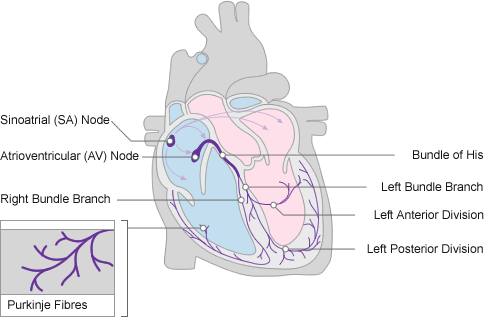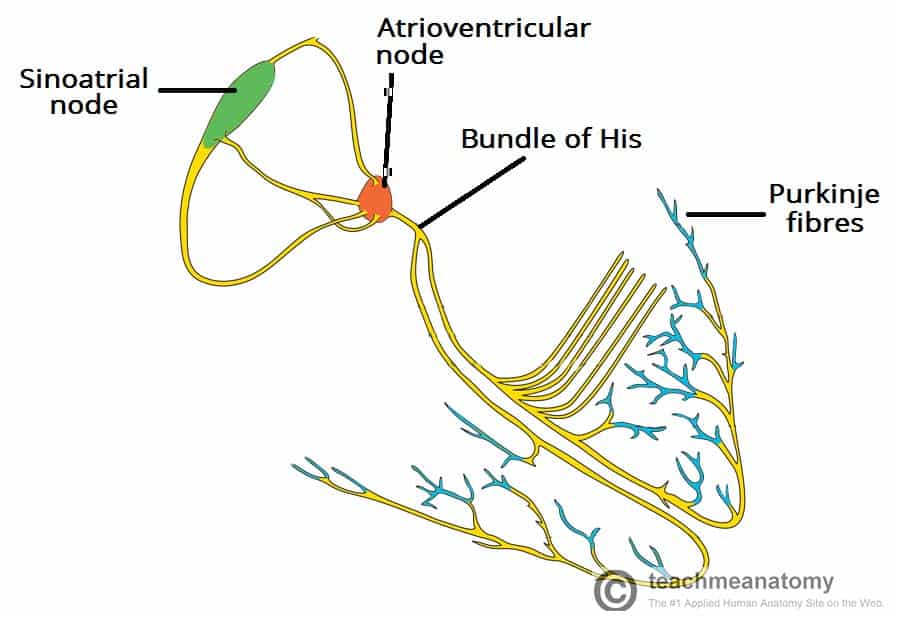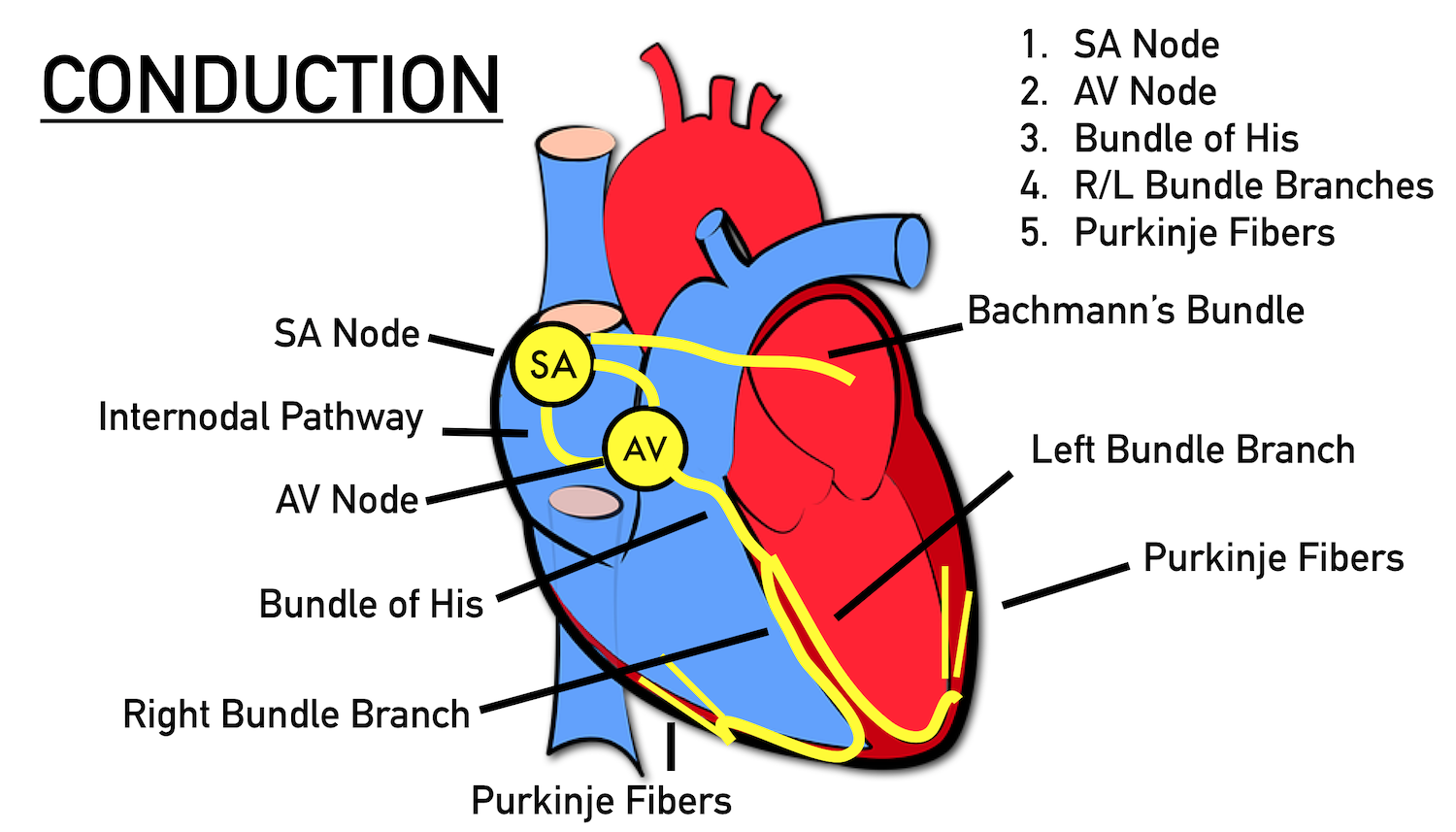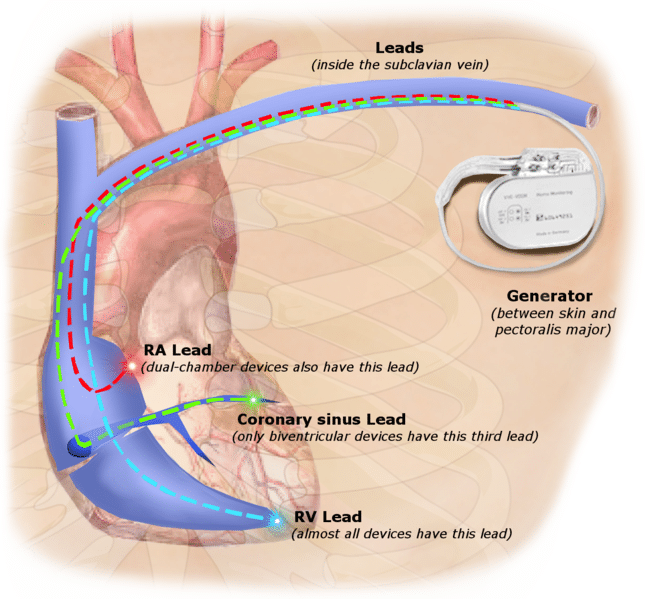What Best Describes the Electrical Conduction System of the Heart
1 Not Helpful 10 Extremely Helpful. Please rate this video on a scale from 1 to 10.

Cardiac Cycle Cardiac Cycle Cardiac Cardiac Nursing
The pacemaker of the heart.

. Electrical conduction system DRAFT. These two nodes are the sinoatrial SA node and the atrioventricular AV node. In order to be able to analyze a rhythm strip you must first learn how the electrical system of the heart works.
Other please specify Question Title. The constant cycle of heart muscle contraction followed by relaxation causes blood to be pumped throughout the body. This is a small mass of specialized tissue located in the right upper chamber atria of the heart.
Which of the following best describes the electrical conduction system of the heart. This conduction system is composed of a group of special cells found in the walls of the heart muscle which send the electrical impulses and cause the heart muscle to contract. An electrical stimulus is generated by the sinus node also called the sinoatrial node or SA node.
The hearts natural pacemaker the sinus node produces electrical signals that prompt your heart to beat. The pacemaking signal generated in the sinoatrial node travels through the right atrium to the atrioventricular node along the Bundle of His and through bundle branches to cause contraction of the heart muscle. Two types of cells control your heartbeat.
Also included is an explanat. Electrical conduction system DRAFT. With normal electrical conduction impulses originate from an area in the top right corner of the heart known as the sinus node.
Some conduction disorders can cause arrhythmias or irregular heartbeats. Electrical Conduction System of the Heart Explained. It travels to the lower two chambers through a specialized conducting pathway known as the AV node.
The conduction system of the heart controls its pumping action which results in the delivery of blood to the different organs and tissues of the body. Three common conduction disorders are. The electrical system is intrinsic to the heart meaning that contraction can persist in the absence of neuronal input.
The main components of the cardiac conduction system are the SA node AV node bundle of His bundle branches and Purkinje fibers. Cardiac conduction can be influenced by various factors including exercise temperature and. The electrical conduction system of the heart is responsible for the EKG tracing you see on a patient.
When nodal tissue contracts like muscle tissue it generates nerve impulses like nervous tissue that travel throughout the heart wall. The pacemaker of the heart Preview this quiz on Quizizz. In nursing school especially in your pathophysiology or anatomy class you will have to know how the Sinoatrial node SA node Atrioventricle node AV node Bundle of His right and left bundle branches and Purkinje fibers work to make the heart contract.
The specialized electrical conduction system of the heart allows for the synchronous contraction of the left and right sides of the heart and the sequential contraction of the atria and ventricles Figure 1 b. The SAN is found in the top of the right atrium. Conducting cells carry the electric signals.
The sinus node generates an electrical stimulus regularly 60 to 100 times per minute under normal conditions. As Ive said many times before this was my least favorite thing learning in nursing school. The cardiac conduction system is the electrical pathway of the heart that leads to atrial and ventricular contraction.
The conduction system consists of pacemaker cells that generate spontaneous action potentials and then deliver those impulses throughout the heart. What is the conduction system of the heart quizlet. Which of the following best describes the electrical conduction system of the heart.
Components of the cardiac conduction system The cardiac conduction system involves the spread of electrical activity from the sinoatrial node to the atrioventricular node down the bundle of His and along the Purkinje fibres. Play this game to review Circulatory System. Your heart rhythm is the way your heart beats.
The cardiac conduction system is a network of specialized cardiac muscle cells that initiate and transmit the electrical impulses responsible for the coordinated contractions of each cardiac cycle. These special cells are able to generate an action potential on their own self-excitation and pass it on to other nearby cells conduction including cardiomyocytes. The electrical conduction system of the heart transmits signals generated usually by the sinoatrial node to cause contraction of the heart muscle.
Bundle branch block Explaining the problem. Cardiac conduction system The heartbeat starts in the heart itself due to the sino-atrial node SAN. The atria are then activated.
The heart has two nodes that are instrumental in cardiac conduction which is the electrical system that powers the cardiac cycle. Electrical impulses most quickly arise in the spontaneously firing cells of the sinoatrial SA node commonly called the pacemaker. The cardiac conduction system is a group of specialized cardiac muscle cells in the walls of the heart that send signals to the heart muscle causing it to contract.
This video describes how the electrical signal passes through the heart and causes the coordinated contraction of heart muscle. After contraction of the heart due to the electrical system which contributes to the blood flow of the heart throughout the body. Conduction is how electrical impulses travel through your heart which causes it to beat.
Electricity then spreads across the upper two chambers of the heart. S-A node to Purkinje fibers Which of the following procedures involves taking a portion of a vein typically the saphenous and transplanting it into one or more of the hearts coronary arteries. Muscle cells control your hearts contractions.
Normally electrical impulses travel down the right and left branches of the ventricles. Which of the following best describes what the P wave represents. Your hearts conduction system is the network of nodes groups of cells that can be either nerve or muscle tissue specialized cells and electrical signals that keep your heart beating.
Cardiac conduction is the rate at which the heart conducts electrical impulses. The electrical stimulus travels down through. SA node to Purkinje fibers.
These impulses cause the heart to contract and then relax.

Chapter 19 Cardiac Conduction System Flashcards Quizlet

Pin By Nonas Arc On Sick Sinus Syndrome Heart Electrical Ventricular Tachycardia Heart Valve Disease

A P 2 Chapter 18 Module 4 Flashcards Quizlet

Cardiac Conduction System Normal Function Of The Heart Cardiology Teaching Package Practice Learning Division Of Nursing The University Of Nottingham

Conducting System Of The Heart Bundle Of His Sa Node Teachmeanatomy

Pin On Nursing School And Study Guides

Electrical Conduction System Of The Heart An Overview Sciencedirect Topics

Av Heart Block Poem First Second Third Degree Types Ecg Rhythm Examples Explanation Made Easy Ezmed

Heart Lecture Flashcards Quizlet

Cardiac Conduction System And Ecg Wmv Youtube Anatomy And Physiology Physiology Cardiac
How Does The Electrical Conduction Of A Heart Work Quora
:watermark(/images/watermark_5000_10percent.png,0,0,0):watermark(/images/logo_url.png,-10,-10,0):format(jpeg)/images/overview_image/2680/o6KmBa0TzRQVseboRYInAA_conducting-system-of-heart_english.jpg)
Conduction System Of The Heart Parts And Functions Kenhub

Chapter 17 Blood A P2 Flashcards Practice Test Quizlet

Cardiac Muscle And Electrical Activity Anatomy And Physiology

Conducting System Of The Heart Bundle Of His Sa Node Teachmeanatomy


Comments
Post a Comment